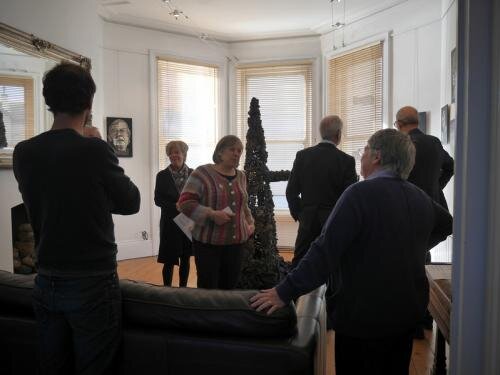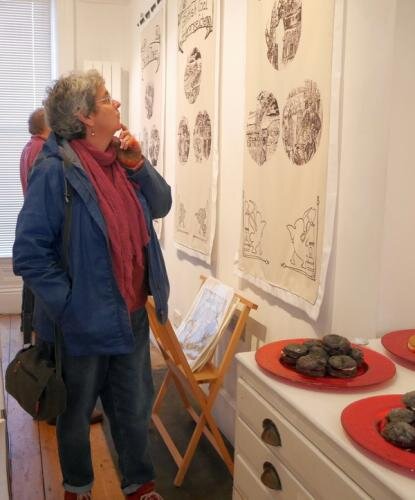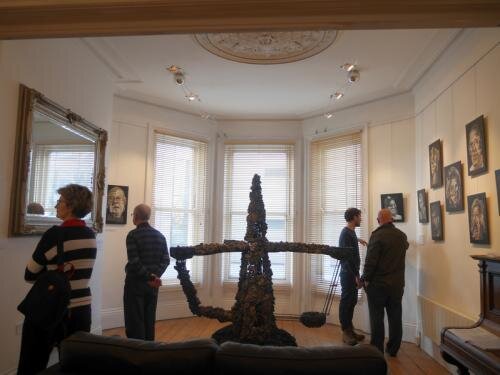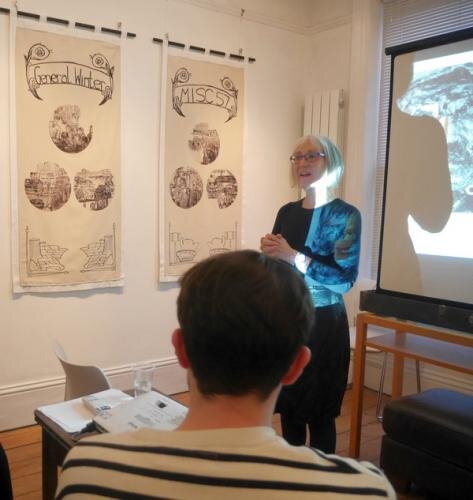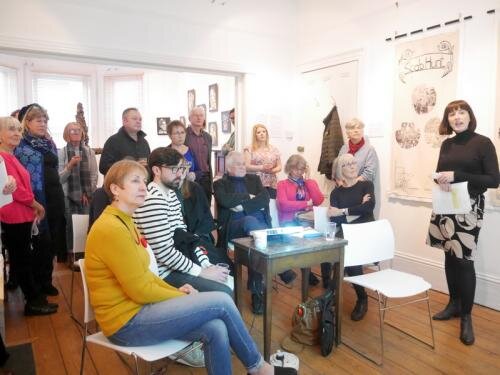Clinker 1984-85
Clinker, 1984-85 is Nicholas Vaughan’s visual exploration of the 1980’s mining strike, in which the artist will exhibit a body of work developed exclusively for this show, at two different locations in Wakefield.
In this first series coming out of his project Grassy Slag Heaps, the artist visually articulates themes of media-misrepresentation, communities’ strife, violent confrontation and political strategies. This is particularly present in both Ghosts of 84-85 and Rally cry, being shown at SnapArts.
Coming across a book written by his great-uncle George Bale in which he documented the closure of mines between the years 1986 to 1998, Nicholas Vaughan felt compelled to revisit this period of British history and look back at his family’s Yorkshire roots. Out of the research that ensued was born the project Grassy Slag Heaps. With this project, the artist will explore mining memories and history and develop new artwork, of which this year’s show is the first installment.
Having read the ‘The Diary of a Coalminer’s Son’ really incensed Nicholas' appreciation and interest towards this theme and as a starting point he developed the text below:
Legend has it underneath Wakefield cathedral a tower of coal stands and has done since time immemorial. Nobody has ever tried to investigate this fact, but others prefer to say it’s a memorial to the miner’s struggle of the eighties. Measurements aren’t completely reliable, but it has been rumoured to sink several hundred metres. Its central point is exactly beneath the nave of the church and its girth is said to be the same circumference as the building above. Some have compared its aesthetic to that of a giant root system. One that grows directly downwards from the ecclesiastical structure ahead. A mammoth tombstone that shoots underground its flanks peppered with the tunnelling of some organic matter processing worm. Constantly under assault by specialist staff with drilling equipment to burrow deep into the ever-narrowing needle of coal about them. A team of diligent miners slogging away for years on end but who would pay for this great feat of engineering?
Once the vicar had been watching the miners digging furiously all day and when they had clocked off and left he’d walked out and found a chunk of coal. He reached for it and at once his palm was crossed with black gold. Since that event a regular transfer of coal would be passed between the church and the mining fraternity. A delivery of coal to the coke plant at the back of the church once a month to keep the parishioners warm through the freezing months of winter. The miners for their part would come closer to the surface, nearer to the foundations of the church which glowed like embers with a comforting warmth. In those harsh political times, even they as miners couldn’t always afford coal for the hearth (at home).
Mine after mine closing, another strike. It was good thing that they still had something to occupy their time. Some felt as though they were doing it for some form of resistance to the government. That they could prove it to the political parties that they still had it in them. They would show they weren’t finished and not ready for the dole queue or the redundancy heap. They would bring with them on occasion all their banners and protest flags. Rig them to the mine face drill. Attempt to barrage through a composite wall of carbon and earth, rocks, metal, and other debris. Another dynamite laid, another potentially risky tremor of the matter around them.
Above in the rafters of the church the voice of the brethren echoed, and a candle quivered in the sombre darkness. Grimy faces in the darkness, several gloomy yellow lights picking out a crack. Constant panic that the walls and ceiling might cave in. That they need reinforcing all the time to prevent a disaster. Not just men but animals, pit ponies and budgerigars. Always the first to snuff it in the face of a toxic breath of gas. At the coalface men chipping at the hard stone with shovels. Picks and axes thrown across their shoulders as if they weren’t carrying enough weight already. Chipping and chipping away at the coalface, shaving that column of coal ever thinner. You can follow the project's website here.

